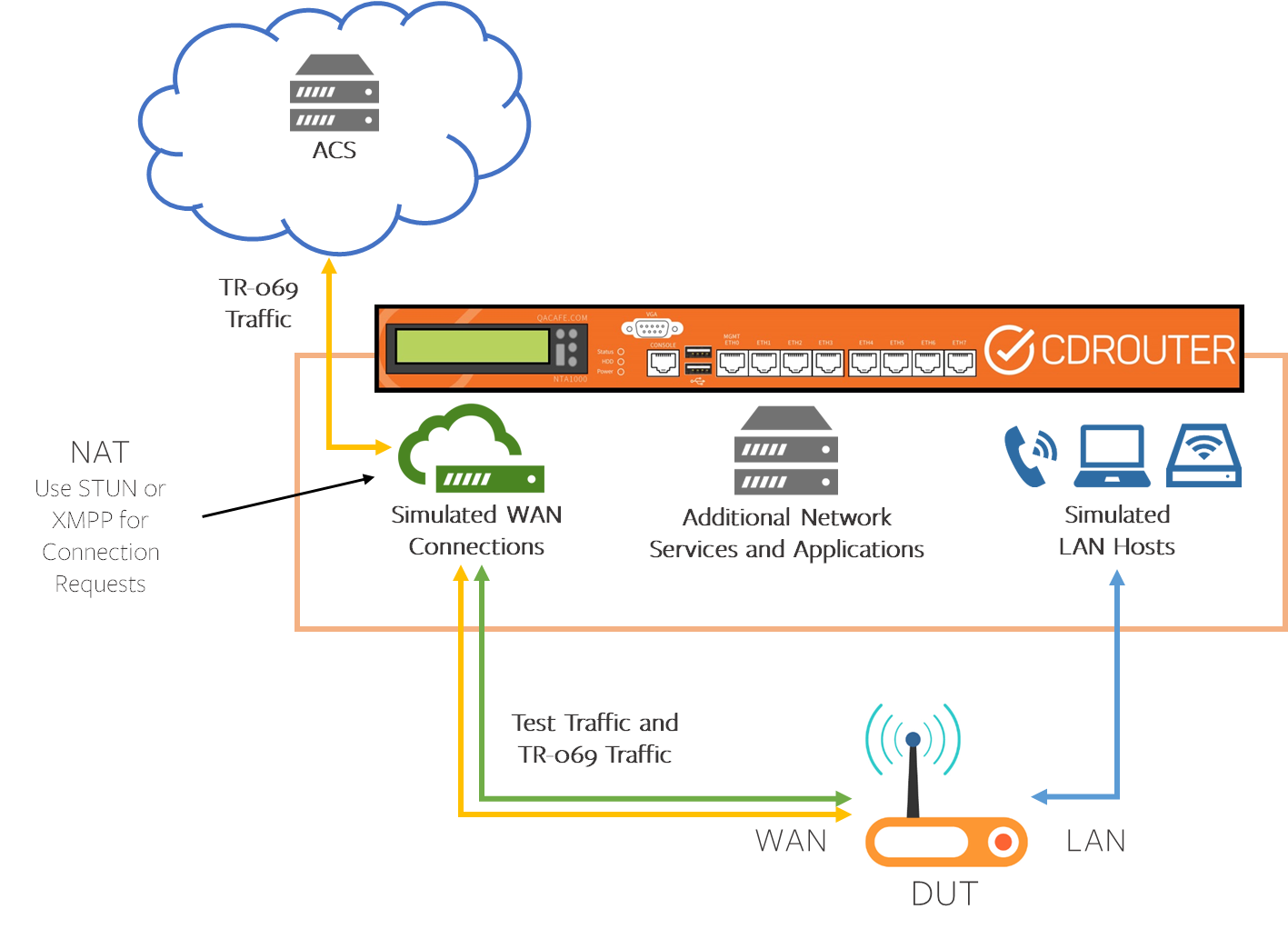Articles
Verifying TR-069 real-world scenarios with a native ACS
3 min read
When it comes to testing TR-069, there are three main stages:
- Testing that your device handles CWMP and the underlying protocols
- Testing that your data model objects and parameters are valid
- Testing that your CPE will behave as expected in production
CDRouter’s automation platform can make it very easy to do all of these, and do them repeatedly from firmware to firmware. However, this third point involves two things: verifying that your device makes the internal changes that were configured via CWMP, and testing in your actual production network. What happens when you already have an ACS you want to work with in that network?
Option 1: Test TR-069 with CDRouter, then use CDRouter ICS to test production
In this case, you can use CDRouter TR-069 to validate steps 1 and 2, above, letting you do rigorous verification of CWMP itself before attempting to use it in your production network. This would include all of the test modules covered by CDRouter TR-069 as well as all of the data model validation done through the profile test modules.
When this is done, you can use CDRouter Internet Connection Sharing to test your device against your real ACS. If you are using your own or a specific customer’s ACS, you can use that system for all of your initial bootstrap needs, and then use CDRouter to run real-world verification tests for things such as DNS, NTP, or firewalls, IPv6, and security.
Using an existing ACS with CDRouter Security
 If you are going to create a test setup using an existing ACS, you can use CDRouter Security Add-on to allow simultaneous access to your ACS while maintaining your ability to test other services with CDRouter. The TR-069 traffic bound for your ACS is routed separately from test traffic, so you can have your DUT complete its bootstrap process, then move on to feature, scalability, and performance testing with CDRouter.
If you are going to create a test setup using an existing ACS, you can use CDRouter Security Add-on to allow simultaneous access to your ACS while maintaining your ability to test other services with CDRouter. The TR-069 traffic bound for your ACS is routed separately from test traffic, so you can have your DUT complete its bootstrap process, then move on to feature, scalability, and performance testing with CDRouter.
Note: Since CDRouter’s outbound connections work over a NAT, it’s important to make sure your DUT handles Connection Requests using STUN or XMPP.
Option 2: Replicate your ACS bootstrap process with TR-069 Scenarios
Alternatively, you can use CDRouter TR-069 Scenarios to replicate the steps that your production ACS would take when interacting with your CPE, particularly the bootstrap process. You can then perform additional automated TR-069 testing, or cover the range of testing discussed above to verify the real-world functionality of your CPE.
If you are concerned about interoperability with your ACS, taking some simple steps ahead of time to verify basic protocol and transport level interoperability can be done before or after passing off your device to rigorous CDRouter testing.